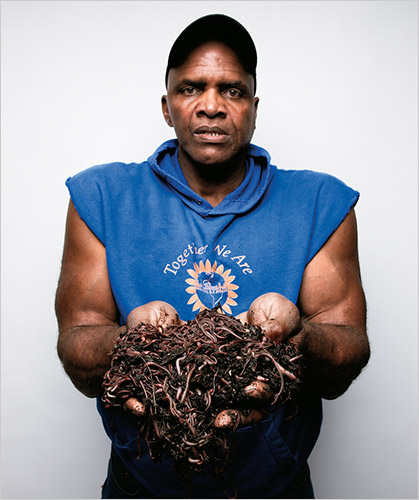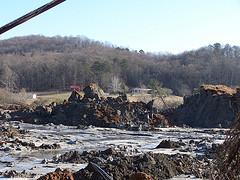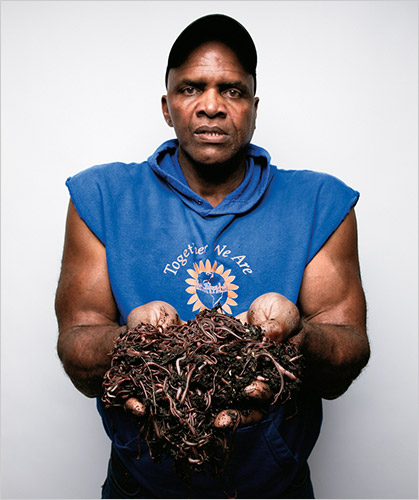 Will makes soil–and you can, too.Source: The New York TimesAnyone who wants to understand the paradoxes and promise of urban agriculture must read the luminous profile of Growing Power’s Will Allen by Elizabeth Royte, online now and forthcoming in Sunday’s New York Times Magazine. I could gush about the elegance of Allen’s farming system or the brilliance of Royte’s prose; but it’s the afternoon before a long weekend, and I want to get outside. Read the damn thing–it might make you want to get your hands in the dirt, too!
Will makes soil–and you can, too.Source: The New York TimesAnyone who wants to understand the paradoxes and promise of urban agriculture must read the luminous profile of Growing Power’s Will Allen by Elizabeth Royte, online now and forthcoming in Sunday’s New York Times Magazine. I could gush about the elegance of Allen’s farming system or the brilliance of Royte’s prose; but it’s the afternoon before a long weekend, and I want to get outside. Read the damn thing–it might make you want to get your hands in the dirt, too!
But let me get to what I think is the heart of the piece. After going through the titanic productivity of Allen’s Milwaukee plots–and his wide-ranging work as a teacher–Royte writes:
Employing locals to grow food for the hungry on neglected land has an irresistible appeal, but it’s not clear yet whether Growing Power’s model can work elsewhere. “I know how to make money growing food,” Allen asserts. But he’s also got between 30 and 50 employees to pay, which makes those foundation grants — and a grant-writer — essential. Growing Power also relies on large numbers of volunteers. All of which perhaps explains why other urban farmers have not yet replicated Growing Power’s scale or its unique social achievements. So no, Growing Power isn’t self-sufficient.
However ….
But neither is industrial agriculture, which relies on price supports and government subsidies. Moreover, industrial farming incurs costs that are paid by society as a whole: the health costs of eating highly processed foods, for example, or water pollution.
So Allen’s operation is subsidized by grants, and its knock-on effects and externalities are positive: turning food waste otherwise bound for a landfill into high-value fertilizer, healthier diets in low-income areas, etc. Our industrial food system is subsidized by the government–through $15-$25 billion per year in direct payments, but also through lax antitrust enforcement and more–and the externalities are mainly negative: rising diabetes and obesity rates, oceanic dead zones, greenhouse gas emissions, etc.
There’s a provocative case here for transforming the farm-support regime. And I’ll leave you with that thought as we approach the anniversary of the U.S. revolution.
P.S., i should note that I’m quoted in the article.



